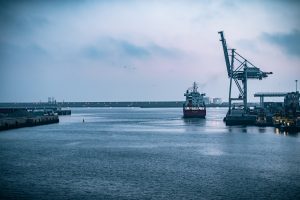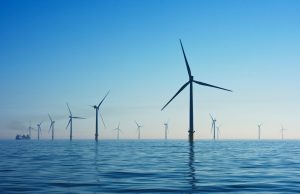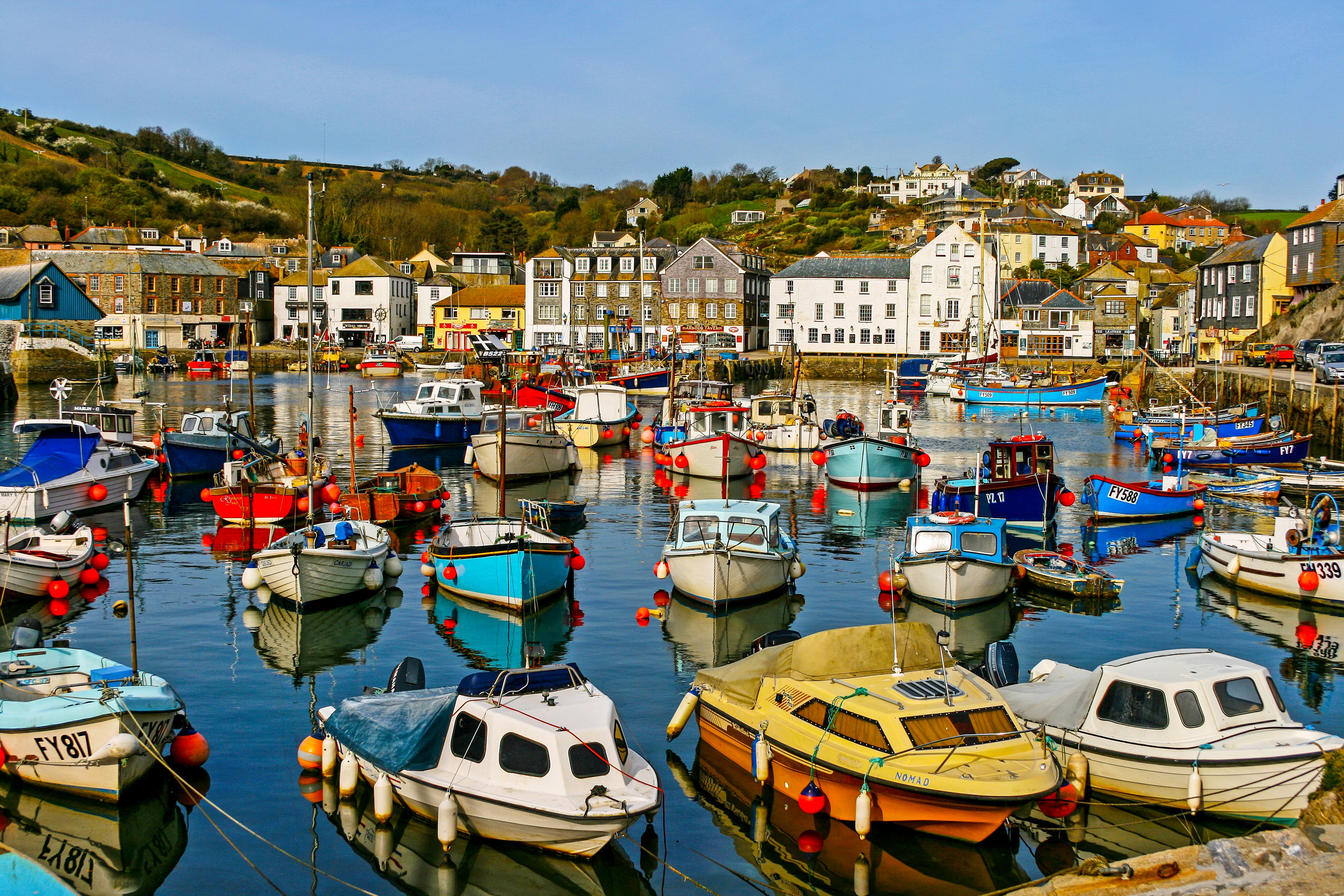MUSES is an abbreviation that stands for the “Multi-use in European Seas.” This project has been funded by the European Union’s Horizon 2020 research and innovation program under grant agreement no. 727451.
For the sake of clarity and in-depth further understanding of the matter, we shall first give a valid explanation of the “multi-use” term and what it stands for. Multi-use (MU) is essentially an umbrella term that comprises a multitude of use combinations in the marine realm. It outlines a radical change from the concept of exclusive resource rights to the inclusive sharing of resources by either a particular user or multiple users at once. This inclusive sharing is meant to be understood as the joint use of resources in close geographic proximity.
The new Horizon 2020 project provides a comprehensive overview of the increasing marine challenges, identifies suitable sectors and sea areas, and highlights priority issues for the development of the multi-use. The project is based on work with real ‘multi-use cases from all over Europe and is undertaken by local stakeholders with relevant experience and in-depth knowledge.
MUSES is a two-year project, coordinated by Marine Scotland, which commenced on the 1st November 2016 and concluded on the 31st October 2018.
The Reason behind the MUSES Project
What prompted the MUSES project is the increasing demands on ocean resources and the way we are cultured to handle them. The ocean space is a valuable asset, but its excessive use caught our attention in pursuit of preserving it as well as optimising maritime activities. This optimisation includes combining compatible marine activities, which can serve to share and reduce costs.
 The rising tensions between marine activities can bring about the demand for maritime space; therefore, generating synergies between these activities is one of the main goals of the MU. The multi-use combinations that the project is ready to explore are presented in a carefully developed action plan that ultimately brings theory into practice.
The rising tensions between marine activities can bring about the demand for maritime space; therefore, generating synergies between these activities is one of the main goals of the MU. The multi-use combinations that the project is ready to explore are presented in a carefully developed action plan that ultimately brings theory into practice.
Firmly rooted in the solid ground of data gained through scientific observations and practical experience, the project will ultimately aim to maximise the beneficial effects for all localities involved. Meanwhile, it will steadily implement a number of appropriate methods to minimise any possible obstacles, hazards, and negative influences associated with the multi-use development of the EU marine area.
The focus of the MUSES project falls on integrated planning, and the additional emphasis is given on other means of achieving more significant insight into feasible solutions for the future of MU. Specific aspects on both national and regional scales are not neglected but instead taken into careful consideration when planning subsequent prospective endeavors.
The MUSES Project Scope
The MUSES project is funded by Horizon 2000 with a budget of €1.8 million. Its central objective is to explore the possibilities for Multi-Use in European Seas across five EU sea basins, namely:
- The Baltic Sea
- The North Sea
- The Mediterranean Sea
- The Black Sea
- The Eastern Atlantic
Furthermore, an extensive series of case studies will be organised and evaluated. Their results will be further used to set forth an action plan to amplify currently known information and diminishing any missing technological pieces.
An additional goal of great importance will be to recognise influences and threats and multiply advantages for the local area regardless of any possible obstructions.
The Team and Partners of the MUSES Project
MUSES is the latest project to be started by the SUBMARINER Network. This one-of-a-kind platform consolidates the efforts of numerous participants from the Baltic Sea Region in fostering innovative and sustainable management of marine resources.
Communication and engagement are a key part of our research method, which can then help us to integrate the best solutions to the increasing problems of marine activities. In this regard, the MUSES first meeting assembled together the project consortium of 10 European partners. The Consortium is composed of several consultancies, academia, and government bodies, as listed below:
- Marine Scotland (Lead Partner)
- The Maritime Institute Gdansk (Poland)
- THETIS SPA (Italy)
- SUBMARINER Network for Blue Growth EEIG (Baltic Sea Region)
- Alfred Wegener Institute (Germany)
- Ecorys (Netherlands)
- Fundação Gaspar Frutuoso (Portugal/Azores)
- Hellenic Centre for Marine Research (Greece)
- The Institute of Marine Sciences (Italy)
- University of Dundee
The meeting took place on 13-14 December 2016 in Brussels. Presided by leading partner Marine Scotland, the conference covered reports from various geographical areas, and all partners made valuable contributions to the cause, with close-knit connections to stakeholder groups.
We have engaged 180 stakeholders from different maritime activities who have shared their knowledgeable perspectives and helped us strategise our way into the most valuable multi-use in the targeted seas throughout Europe. Some of the stakeholders participating in the activities are also directly involved in the multi-use in the Eastern Atlantic, the North Sea, and the Baltic Sea.
Other project partners contribute to the Horizon-funded research by creating a series of case studies that help assess potential synergies for the multi-use with different thematic, geographic, and focus area dimensions. Their individual contribution to the objectives of the project can be briefly summed up as follows:
- The Submariner Network members provide two of the case studies in the Baltic Sea;
- The Danish Technological Institute uses its experience to create a case study on offshore wind production, marine biomass production, and environmental remediation in Danish waters;
- The Royal Institute of Technology (Kungliga Tekniska Högskolan, KTH) focuses its case study on global resource area optimisation, focused on energy, food supply, and the environment in Swedish waters.
One of the case studies, for example, explores the combination between offshore wind farms and commercial fisheries on the East Coast of Scotland. The case study identifies the benefits for all parties involved, such as commercial fisheries, renewable energy industry representatives, as well as government officials, and society in general. The benefits for fisheries include the continuation of access to all sea areas relevant to a fishery interest as well as avoidance of unnecessary costs.
Teamwork is a vital prerequisite for the project’s successful delivery of its findings as well as overcoming any geographic challenges that may arise throughout different stages of the process. Therefore, the engagement of local stakeholders to identify both opportunities and barriers is greatly encouraged, and reporting their findings is also considered an essential part of the long-term multi-track collaboration.
The Outputs of the MUSES Project
We can outline several outputs of outstanding value for the MUSES project. These are:
- Overviews of MU – general and regional (including the Baltic Sea, North Sea, Mediterranean Sea, Black Sea, and Eastern Atlantic).
- Seven Case Studies – each of which presents analysed data obtained as a result of thorough research on the benefits and limitations of the MU in certain localities.
- A well-defined Action Plan:
- Designed with the goal of revealing the chances of MU development in European seas
- Relying on local stakeholders play an active role
- Putting an underlined emphasis on future benefits
- Pursuing exact identification of obstacles
- Suggesting solutions and recommendations.
The Action Plan of the Multi-Use
 Systematic research has been carried out over the course of 22 months which has led to the development of the Action Plan that reveals the essential opportunities for Multi-Use in European Seas, including the wide range for modernisation and Blue Growth potential. The Action Plan will ultimately be concluded with a straightforward outline of the actions that need to be taken so that MU is further developed and environmental risks are reduced to the minimum.
Systematic research has been carried out over the course of 22 months which has led to the development of the Action Plan that reveals the essential opportunities for Multi-Use in European Seas, including the wide range for modernisation and Blue Growth potential. The Action Plan will ultimately be concluded with a straightforward outline of the actions that need to be taken so that MU is further developed and environmental risks are reduced to the minimum.
More than 200 actors throughout Europe were involved in constructing the action plan. Thanks to the extensive stakeholder engagement, the European consortium was able to focus its in-depth research on the multi-use combinations of the highest relevance. Nine MU combinations are regarded as highly important to implement all across Europe and are clearly defined as follows:
- Tourism, fisheries, and environmental protection
- Tourism, underwater cultural heritage, and environmental protection
- Tourism and aquaculture
- Offshore wind farm and tourism
- Offshore wind farm and fisheries
- Offshore wind farm and aquaculture
- Oil and Gas and Decommissioning – Repurposing
- Offshore wave energy and aquaculture
- Offshore wind and marine renewable energy
The Objectives of the MUSES Project
The multi-use method is intended to achieve a number of important environmental goals underlying the fundamentals of the MUSES project. Some of the most worth-mentioning ones among them can be briefed as follows:
- In-depth analysis of the Multi-Use scope in most European basins, inclusive of the Blue Growth potential.
- Good grasp of the various advantages of co-location in environmental, spatial, economic, and societal aspects.
- A careful study on all areas (regulatory, operational, environmental, health and safety, societal and legal) that are deemed ill-suited.
- Proposal of constructive methods that will use the geographical assets to benefit the project.
- Elimination of most environmental dangers by examining the most unfavorable consequences and/or end results.
- Implementation of technical installments that will prove beneficial for cutting down unnecessary expenses.
- Ensuring environmental sustainability and offering efficient supervision of the way marine resources are handled.
- Increase of work productivity by guaranteeing sufficient functional space by means of creating appropriate “hubs” in order to allow for additional capacity when needed for prospective targets.
- Economization of energy, cost reduction, and optimised spatial structure by means of introducing a new generation of technologies and innovative solutions with the goal of environment care provision.
- Cultivation of a shared spirit of appreciation of teamwork that will help prevent hostile opposition in the work environment as well as escape setbacks in the investment process.
The leading MUSES project objectives, put shorty, are perfectly coordinated between environmental, societal, technological, and political goals and courses of action. They ultimately target the purpose of obtaining a more sustainable perspective on our behavior towards marine resources and their employment – both in the short and the long term.
Primary benefits of the MUSES Project
As coastal and marine activities are intensifying and putting additional pressure on the marine environment and resources, conflicts are becoming more imminent. More and more countries are currently taking their first steps in moving from the traditional sector-to-sector management to a more coherent, holistic, and integrated way of managing marine activities. This is where the MUSES project steps in to furtherly make a positive impact on that somewhat encouraging tendency.
When various maritime activities are located together in one place (for example combining offshore wind parks with mariculture), this is expected to logically bring about better results in terms of economy, environment, and social life. On the other hand, this idea can potentially meet opposition in matters related to law regulations, operational procedures, environmental care, health and safety issues, as well as public concerns of a different character.
The steady, environment-friendly, and legitimate manner of sharing resources will undoubtedly play a crucial role in consolidating the concept of MU as a long-lasting, prosperous initiative. Thus, a two-fold gain will be extended to both those directly involved and the local communities in general, giving rise to economic and ecological benefits.
Raising awareness of the MU benefits and interacting with innovation leaders, stakeholders, and government authorities will showcase the tremendous environmental potential of this idea. The integration of the knowledge that the MUSES project’s extensive research and case studies provide is vital for the positive development of the marine industry in the long run.
Multi-Use Tourism, Fisheries, and Environmental Protection
Tourism is traditionally one of the major drivers for multi-use development in the Mediterranean Sea. The sea benefits from unique biodiversity, vibrant coastal landscapes, and sea shapes which actually enabled the development of soft use combinations. A perfect example of a soft use combination is indeed pescatourism – a phenomenon which we will explain and analyse further in the paragraphs to come.
Pescatourism is a comparatively modern-day notion, which originated in the 1990s in Italy, and it was not long before it reached other countries in the Mediterranean region. It came to stay and can nowadays be regarded as one of the most intelligent sustainable practices throughout the southern areas of Europe.
What pescatourism does, is essentially merging tourism with fisheries. First of all, it provides an additional source of income to complement the fishermen’s family budget. Then, it presents an appealing offer to tourists to sign up for daily fishing trips and experience the traditional culture. And finally – it also raises public awareness about the problematic current state of ecosystems and the marine sector as a whole.

Or else said: pescatourism is a form of MU that brings forth diversification of the local tourism industry while doing its best to preserve the environment by reducing the negative impacts of fishing. In addition, it provides tourists with an insight into the world of fishing and how people can do it correctly and in a sustainable way. Therefore, it also gives the fishing profession a better reputation and makes it more appealing for the younger generation that is by definition more environmentally conscious in all decision-making processes.
Another benefit from furtherly developing the idea of pescatourism is bringing more significant popularity to the region and its local people. It is, therefore, providing better conditions for them to thrive and prosper by practicing traditional local occupations in a contemporary and sustainable manner.
The Fisheries Area Network (FARNET), financed via the European Maritime and Fisheries Fund, has played a significant role in promoting pescatourism through its Fisheries Local Action Groups (FLAGs). Anyway, anglers who would like to engage in pescatourism often encounter a number of different challenges, some of which include the following:
- Compulsory safety requirements for the vessel used by the fishermen.
- Lack of consistent, uniform tax regimes for income generated from fishing and tourism activities.
- Certain restrictions on the number of tourists that can be hosted on board.
- Inadequate experience and poor skills of how fishers should deal with tourists.
Keeping all of the above in mind, the course of action to be taken in order to promote multi-use in European seas includes the following fundamental focal points:
- Focus on the plethora of benefits that MU explores;
- Invest in the steady development of pescatourism by creating detailed training guidelines for fishermen to adhere to in order to improve their practices;
- Concentrate on marketing goals that include cooperation between fisheries communities and tourism stakeholders;
- Assist the process of making or enacting well-defined and unambiguous laws for pescatourism by using the practices that already exist as a stepping stone for national authorities to reinforce, evaluate and, respectively, summon working groups of professionals to offer their expertise for each sector involved
- Make MU operational through incorporating it into different EU policies, for instance, encourage pescatourism promoters to join various sea-basin programmes
- Engage in further research on the multi-use, striving to discover extra benefits in an economic and environmental aspect
Other potential Multi-Use Combinations
The idea of multi-use can and should, undoubtedly, be further applied to a broader range of potential sectors. More significant advantages and better opportunities are in store when MU, co-location, and synergies blend together in order to achieve ultimate results. These MU combinations include but are not limited to:
- Shipping terminal and generation of green energy
- Generation of tidal energy
- Preservation of the environment
- Environmental monitoring – a tool to assess environmental conditions and trends
- Marine renewable energy and desalination/ hydrogen.
All of the prospects mentioned above are expected to convert into reality by merging a number of essential factors. These are – above all – the stakeholders’ outspoken will, an assortment of firm technological advancements, and broad social agreement on the fundamental subject of ecological consciousness and preservation.
Potential opportunities for the MUSES Project
The multi-use combinations are not constrained within the limits of previous notions related to the understanding and application of synergies and co-location. We concentrated our efforts on the development of only some combinations. Yet, we are fully aware of the fact when transitioning from work in one single sector to multiple sectors will broaden the scope of economic, social, geographical, and environmental opportunities for shaping the future of our oceans.
The MUSES project started off on a very practical level. Its goal is to warrant that the overall processes utilised for marine and coastal development of European basins are vigorous and productive. Still, we came to realise that the MU has an even more colossal hidden potential to be unlocked and examined.
Ultimately, it has the potential to transform the mindset on how we can unite efforts and work alongside rather than separately. Although economic growth, on the whole, is unlikely to be influenced on a dramatic level, focusing on the various benefits of multi-use will surely make a significant difference to coastal communities, the global village, and the status of the oceans, which is directly related to the future of our planet.